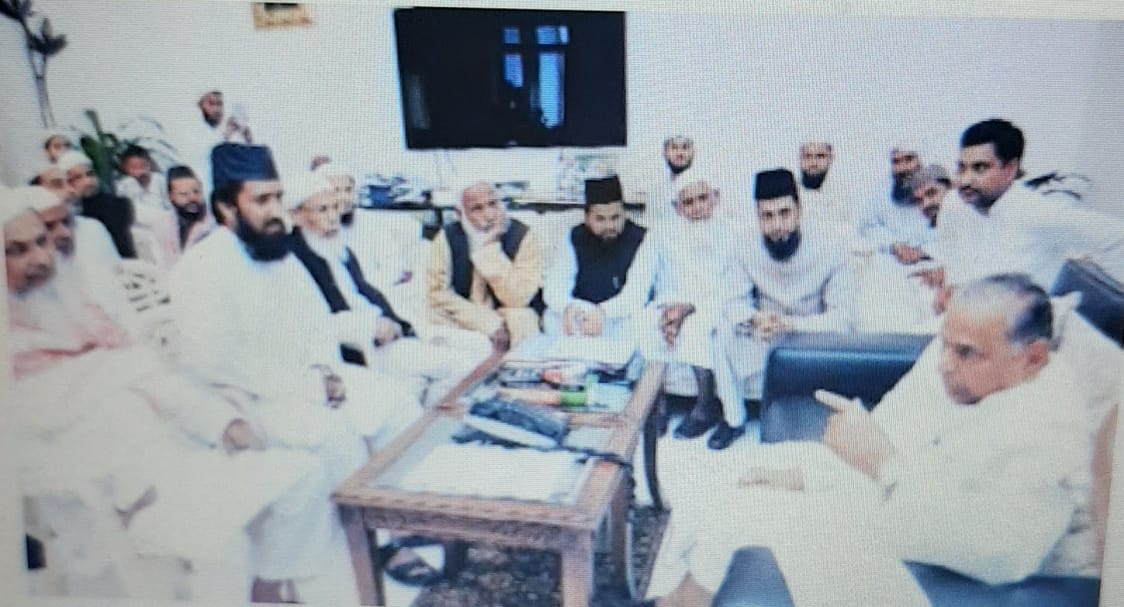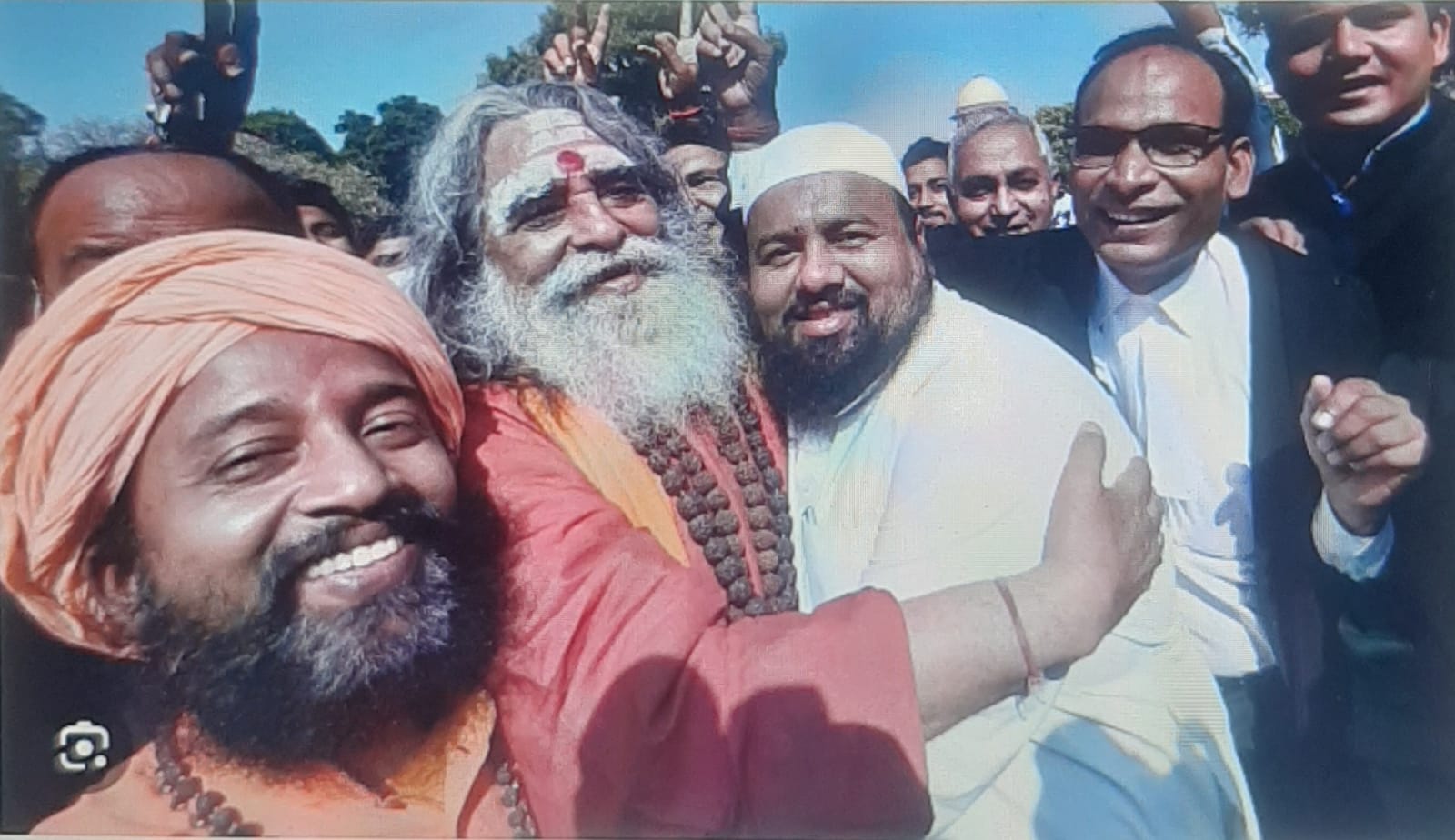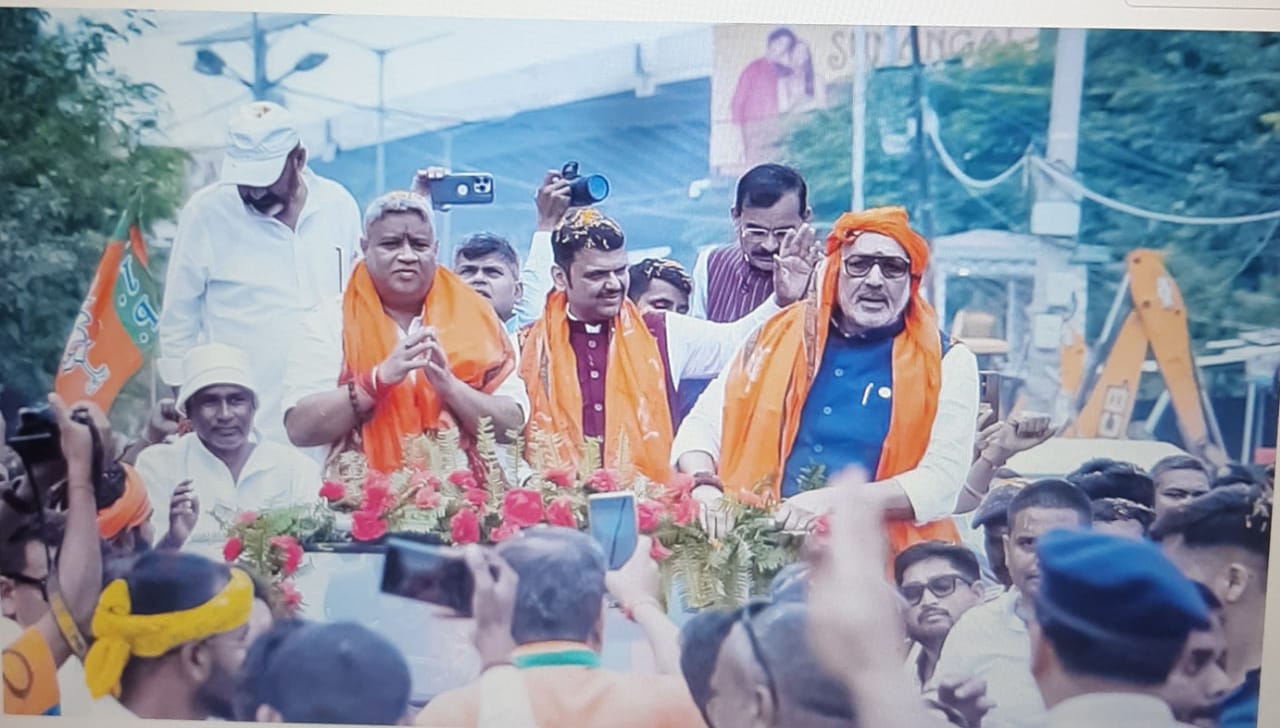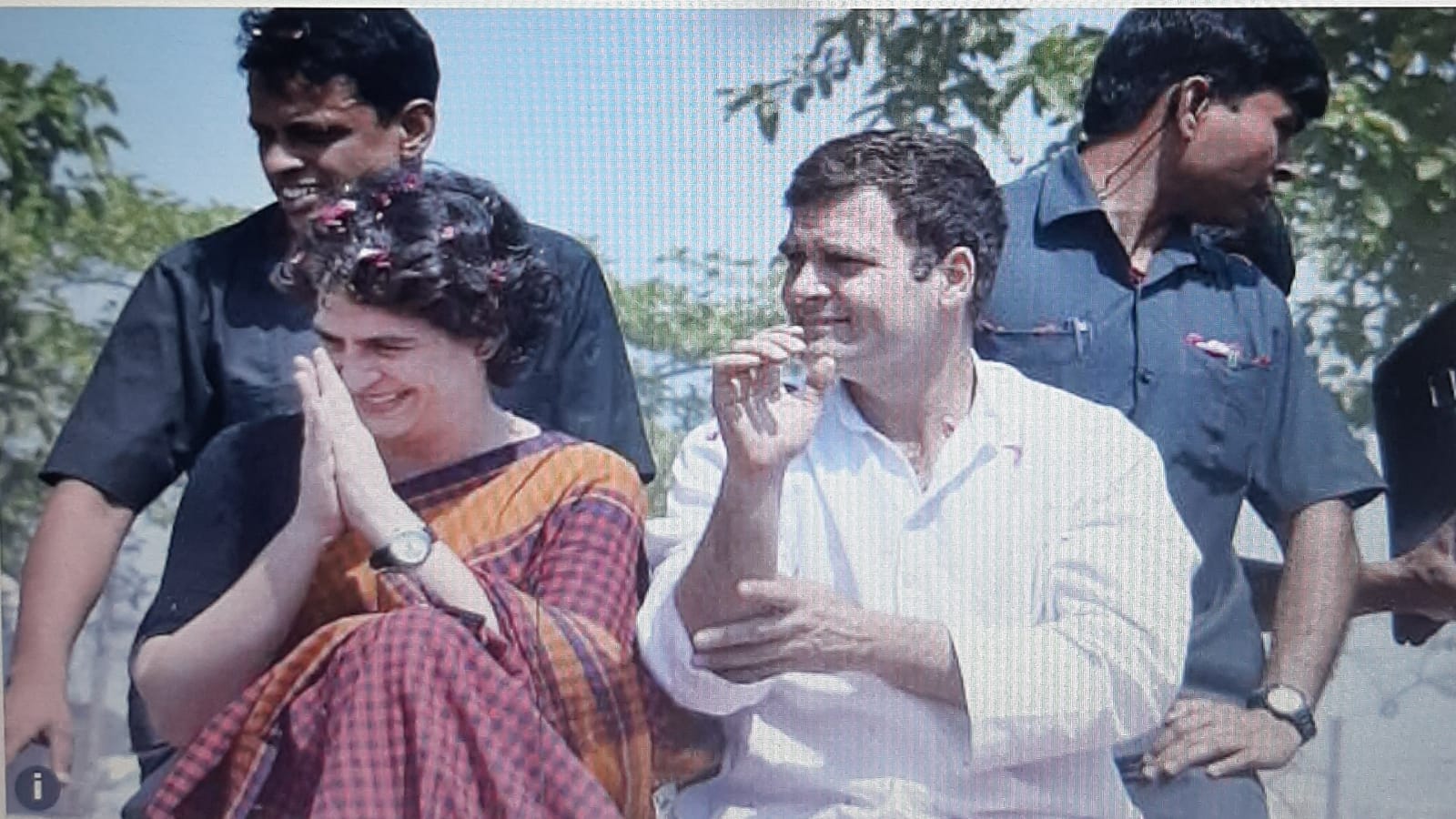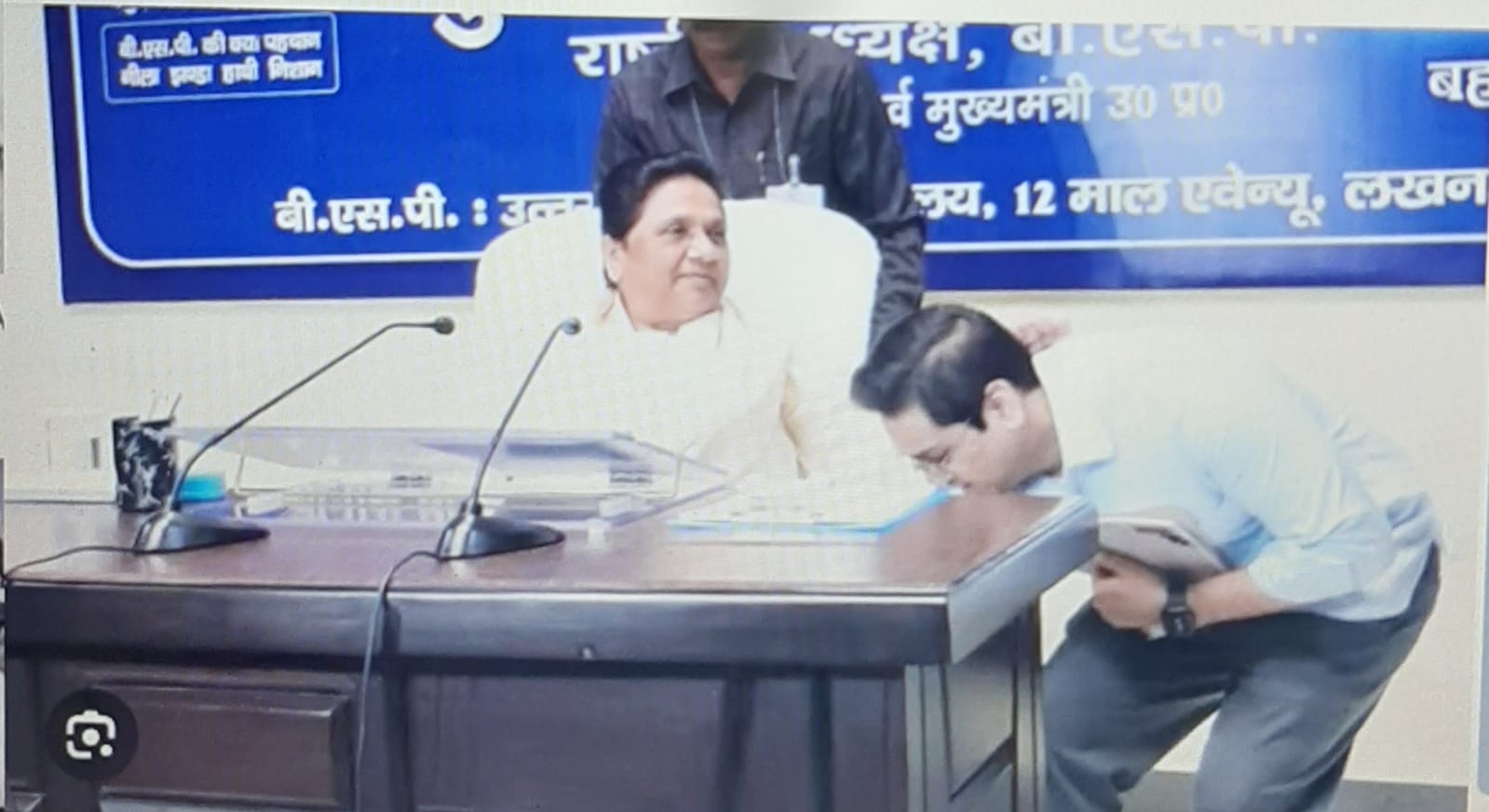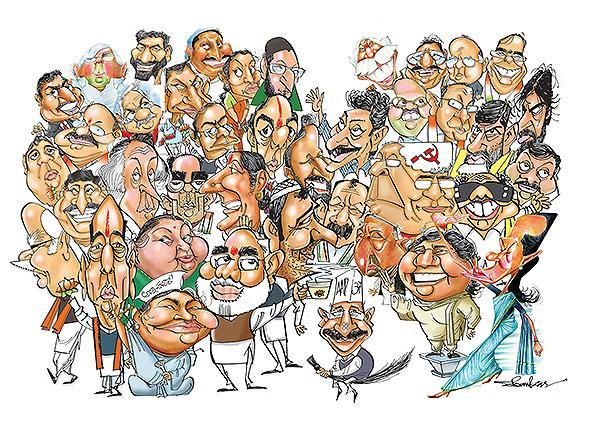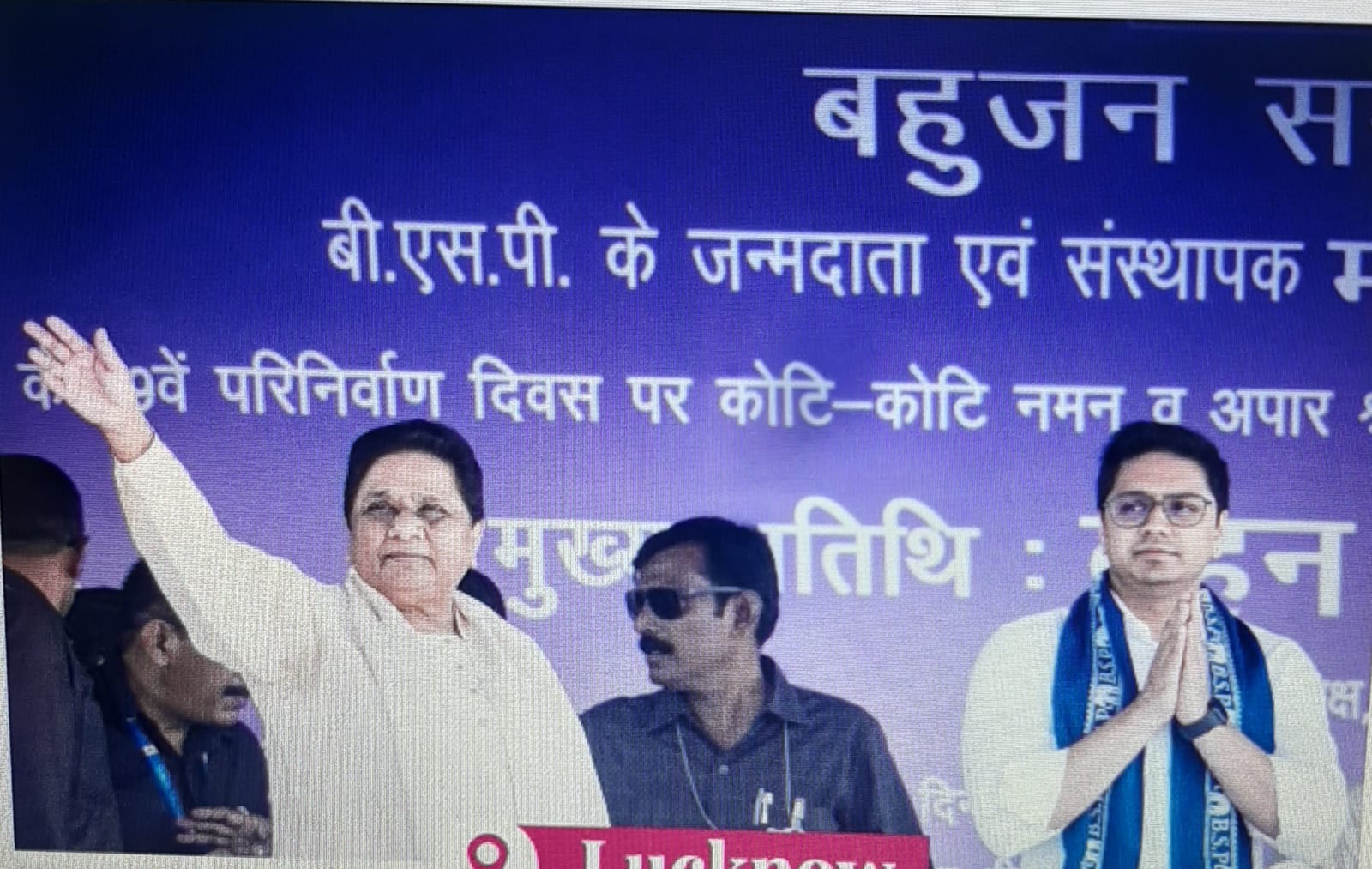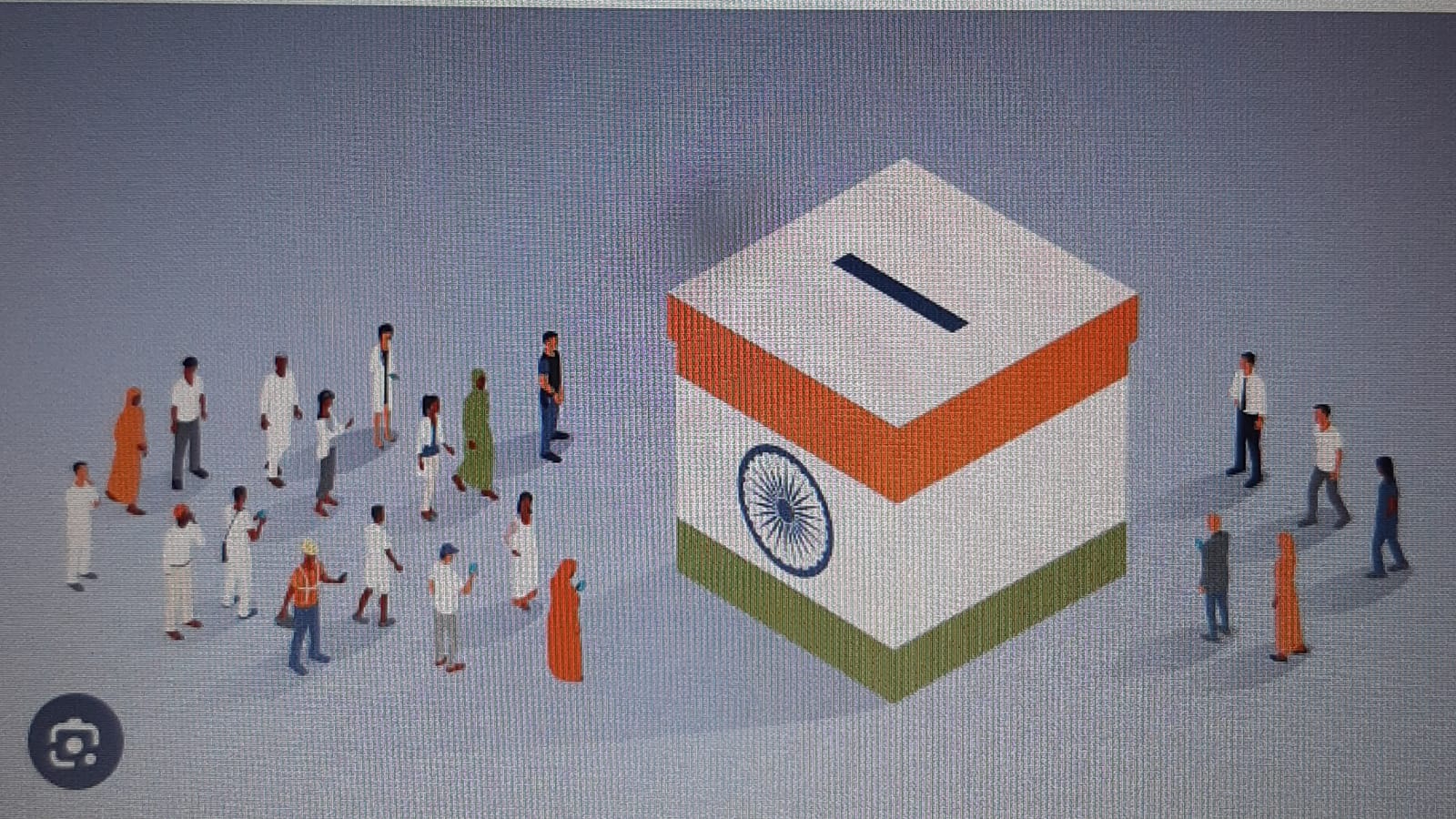
The likely scenario that is going to unfold is that Census operations would commence in 2025 (with or without caste census), its figures would become available in 2026 and the Delimitation Commission would be constituted in 2026 and DC would complete its task by 2028 so that Lok Sabha elections in 2029 can take place in constituencies demarcated based on the report of Fifth Delimitation Commission, writes former IAS officer Sunil Kumar
As 2026 approaches, the debate around the impending Fifth delimitation of India’s Lok Sabha and Vidhan Sabha constituencies gets shriller. While political scientists and public policy analysts have taken this opportunity to try and lay out before readers the various nuances of democracy, delimitation and federalism[i] , the political class has joined the debate in recent days with exhortation to the residents of their States to produce more children for the benefit of the nation.[ii] In Andhra Pradesh, to cite an instance, the State Government had earlier passed a legislation that people with more than two children will be debarred from participating in local government elections and now the State Government has repealed that law and is thinking of coming up with a new legislation wherein persons with less than two children would be debarred from contesting local government elections. This is ostensibly to counter the threat of an ageing society! The Chief Minister of Tamil Nadu has urged residents of Tamil Nadu to consider having sixteen children. The underlying common thread running behind these two extreme statements of Chief Ministers of two southern states is the looming danger of southern states, which have done relatively better than northern states in curbing population growth, losing out on political representation in the Lok Sabha if delimitation is carried out before the 2029 Lok Sabha elections.
While the general consensus is that if delimitation of Lok Sabha constituencies is done primarily based on population alone, southern States stand to lose Lok Sabha seats while States like Uttar Pradesh, Bihar, Madhya Pradesh and Rajasthan would gain seats and their influence in national politics would increase further and this regional power asymmetry is not a very desirable state. It is argued that the principle of ‘equality of representation’, wherein value of a person’s vote is equal as far as possible, is desirable. So the issue of ‘population to representative ratio’, which has deteriorated in States over the last five decades, needs to be addressed[iii].
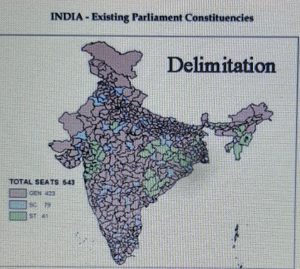
Further, since the MP is also expected to serve their electors, large size of population in a Lok Sabha constituency is a major obstacle. To quote “Political representatives (MPs/ MLAs) do not merely represent population of their respective constituencies in the halls of power and participate in law making but are also expected to serve their electors on the ground. Not only is constituency service an accepted and expected job, it has grown in volume, content and complexity overtime. It covers a huge range of potential activity, including support to individuals, educating voters, grievance chasing, carrying out development work and so forth. Arguably then, an unwieldy size of constituency is a major obstacle for elected representatives to fulfil this task.” (Alam & Palshikar, 2024).
Political scientists have in their writings on the subject in recent years come up with different solutions ranging from increasing the number of seats in the Lok Sabha to around 848, ensuring that representation of no State/UT, large or small, gets reduced from their present status to undertaking reforms in the powers, functions of Rajya Sabha and changing the representation of States in the Rajya Sabha. They have also commented on the feasibility and complexity involved in undertaking amendments to the Constitution. All analysts are agreed on the need to work out ‘fair’ solutions in the spirit of federal accommodation.
One common theme in the aforesaid suggestions is based on the understanding that Indian federalism has two components – Union and the States/Union Territories alone as laid out in considerable detail in the Constitution. The question to be raised and understood in the present context is that whether after the passage of the 73rd and 74th CAA, is it time or not to look upon urban and local governments as the third cog in the federal wheel? And, if yes, then whether strong local governments hold a key to solving apparently vexed and potentially disruptive issues relating to working of democracy and federalism in India including ‘regional power asymmetry’.
The role of local governments in any democratic system of governance, as being closest to the people, in providing critical services, transparency, and accountability to citizens has been widely acknowledged. The 73rd and 74th CAA have provided the constitutional backing to local governments which was lacking earlier despite Panchayats finding a mention in Article 40 of the Indian Constitution as one of the Directive Principles of State Policy. Today it is widely recognized that local governments are an integral part of the multilevel governance structure in the country despite local government figuring in the State list. Since democracy and federalism have been included as part of the ‘basic structure’ of Indian Constitution in the SC judgment delivered in the Keshvanand Bharti case on 24th April, 1973, it is implied that local governments, which tend to deepen democracy, are part of basic structure of the Constitution although there has been no occasion for the SC to rule on the subject so far.
India takes pride, quite justifiably, in being the biggest democracy in the world with nearly 3.3 million elected representatives in rural and urban local governments of which about 45 percent are women elected representatives. A recent Policy Research Paper published by the World Bank captioned ‘Two Hundred and Fifty Thousand Democracies: A Review of Village Government in India’[iv] best captures the path breaking change that is happening across the length and breadth of the country following the passage of the 73rd CAA.
Deepening of democratic roots can best be fostered at Local Government level wherein direct democracy to the maximum extent, in the given circumstances, is even conceptually feasible i.e. working of Gram Sabha / Ward Sabha and ‘right to recall’ as provided in the Panchayati Raj Acts of some States. Likewise, the provision of Area Sabha incorporated in the Municipal Laws of several States, based on the Model Law for enhanced participation of citizens prepared and circulated by Government of India, provides the strongest institutional set up for accountability of the local government to voters. Democratic decentralization can be visualized through the prism of ‘subsidiarity principle’ – wherein it is held that decision-making authority is best placed (a) where responsibility for outcomes will occur; and (b) in the closest appropriate proximity to where the actions will be taken that will produce the outcomes. Thus, several scholars believe that federalism in India needs to be “wider” – where States are given greater powers in more fields and “deeper” – where local governments are further empowered to serve the people they are closest to[v]. This is the most optimal way to ensure that governments serve the people most effectively and always remain accountable to citizens, while preserving the Union. Increased devolution of powers and finances to the Panchayats and Municipalities would strengthen participative democracy at the grassroots level.
It would be evident from above that no matter whether number of Lok Sabha seats is increased to 848 or not, there is no way in which a MP can satisfactorily render ‘constituency service’ to his electors as basically what he is doing ought to be ideally performed by the ward members and local councillors. Thus, to expect a MP to do what 3.3 million elected representatives of local governments cannot do is like ascribing ‘super human’ powers to the MP! Apart from increasing the costs to a MP in keeping several constituency offices in their Parliament constituency, it has also contributed to the huge increase in the budget of MPLADS in the last thirty years as the sum allocated for undertaking local area development has increased from Rs.5 lakh per MP in 1993 to Rs.5 crore per annum since 2017-18. A lot many works taken up under MPLADS essentially fall in the domain of local governments. Same is the case with MLALADS in different States. These two schemes of Union and State Governments have only served to weaken the local governments and win political mileage for the incumbent MPs/MLAs before elections.
If it is agreed that expectation of ‘constituency service’ from MPs and MLAs by electors is unreasonable (no matter whether the size of their constituency is 25 lakh or 15 lakh), then an important rationale for increasing the number of Lok Sabha seats loses its sting!
However, there is another twist in the tale and that is the implementation of Lok Sabha and Legislative Assembly seats for women. If number of Lok Sabha seats are not increased and 182 seats are reserved for women (33% reservation as per 128th CAA), then male representation would reduce from current level of 467 seats to 363 seats and that could cause lot of heartburn for existing MPs whose seats get reserved for women[vi]. So increasing number of LS and MLA seats following fresh delimitation would also help protect the existing male bastion to an extent. This may also help in securing political support in Parliament cutting across party lines for Constitution Amendment bills that would necessarily have to be moved.
As for regional power asymmetry, the present tendency is towards centralization of power in the Union, especially in the aftermath of the Covid pandemic. It appears that delayed Census operations would be used to ensure that delimitation exercise is undertaken based on this Census figures rather than wait for Census operations to be undertaken after 2026 as stipulated by the 84th CAA in 2002 which postponed delimitation exercise to “the relevant figures for the first Census taken after the year 2026 have been published” keeping in view the misgivings expressed by some Southern States. We need to also bear in mind the changed political realities. Back then it was a coalition government that was in power at the Centre and several decisions had to be taken adhering to ‘coalition dharma’. No such political compulsion exists as on date.
The likely scenario that is going to unfold is that Census operations would commence in 2025 (with or without caste census), its figures would become available in 2026 and the Delimitation Commission would be constituted in 2026 and DC would complete its task by 2028 so that Lok Sabha elections in 2029 can take place in constituencies demarcated based on the report of Fifth Delimitation Commission. DC would also reserve one third seats for women apart from those for SC/ST based on latest Census figures. There is no way in which Government would wait for the next Census in 2035 after the 2025 Census and if any provision of 84th CAA calls for amendment then the same would be carried through. The ruling dispensation has veered around to the view that the new class of ‘beneficiaries’ and ‘women’ could be targted and that would offset the impact of caste divisions among voters. Fresh delimitation would also provide an opportunity to cut to size certain groups politically in certain constituencies where they wield ‘disproportionate’ power based on their higher fertility rate alone. Everything would be done in the name of strengthening democracy and federalism in the country and in a ‘constitutional’ way! And if ‘one nation, one election’ also materialises by then, that would be the proverbial icing on the cake!
However, just to be the devil’s advocate and hoping against hope that some sense would prevail and politicians would refrain from rendering the already strained social ties a mortal blow, it is suggested that let the Lok Sabha be expanded in the same proportion as prevails now between different States so as not to disturb the present regional power symmetry and then frozen. India’s population is expected to begin to decline in the next three to four decades anyway. The same formula could be adopted for seats in the Legislative Assemblies too.
The next step would be to introduce a comprehensive Constitution Amendment Bill to further strengthen the Urban and Rural Local Governments. First suggestion would involve rationalisation of the Urban and Rural Local Governments with a view to make them viable administrative and financial units even while strengthening their democratic governance and accountability structures. This would call for making provision in the Constitution for setting up an independent Delimitation Commission (DC) in every State for determining the boundaries of all Gram Panchayats and the wards therein, the constituencies for Block and District Panchayat members and the boundaries of Town Areas, Municipalities and Municipal Corporations and the wards therein. The boundaries of Area Sabha/Mohalla Sabha must also be delineated by the Delimitation Commission. Apart from population – area, contiguity, existing boundaries or administrative units, communication facilities and availability of public conveniences like markets, hospitals, secondary schools, banks etc. Development of an extensive network of rural roads under the Pradhan Mantri Gram Sadka Yojana (PMGSY) in the last 23 years coupled with impressive strides made in improving digital connectivity and increased prosperity in rural areas have made physical distances somewhat less daunting. With sharp rise in number of tractors and motor cycles in rural areas, distances can be covered in matter of minutes rather than hours. Increased mechanization in agriculture activities symbolized by use of drones for spraying pesticides have brought about dramatic changes in farmers mindsets. Now people aspire to have urban facilities in rural settings. In order to garner support of the States, State Legislative Assemblies may be granted the power to mandatorily set up the Delimitation Commissions for Local Government after every Census and time limit for initiating and completing this exercise by all States could be stipulated in the Constitution. The existing provisions relating to Delimitation Commission wherein power of Parliament is restricted to only approving the report and not amending it and keeping it outside the purview of judicial review could be extended to State Assemblies.
Apart from the provision relating to Delimitation Commission for Local Governments, there is need to expand the Seventh Schedule of the Constitution to include the Local Government list wherein subjects mentioned in Eleventh Schedule and Twelfth Schedule can be incorporated. Additional subjects such as control over Fire Brigade, Traffic Police, local transport, ownership and management of public lands within their jurisdiction, effecting change in land use could also be entrusted to Local Governments. This list is illustrative and not exhaustive. Power to legislate on subjects in the Local Government list could remain with the State but rule making powers may be given to local governments. This would ensure say of the elected representatives of Local Governments in managing their affairs.
The next most important provision could relate to setting up of a Consolidated Fund of Local Government and granting Local Governments a share in GST[vii]. These would entail transfer of specialised manpower and their control from the Departments in States to the Local Governments. It would then be not just transfer of funds, functions and functionaries but also powers to the Local Governments. In my view accepting this proposal has the potential to accelerate the process of strengthening local governments in a short period of say five to ten years as then ‘anti-incumbency factor’ would be most felt in local government elections rather than Assembly or Lok Sabha elections!
Since Local Governments are an integral part of the multilevel federal governance structure in the country, it is imperative that democratic governance structure must cover the entire length and breadth of the state. No part of the State can be carved outside the coverage area of local government, whether rural or urban, and exceptions such as industrial townships (Article 243 Q) must be dispensed with and suitable democratic governance structure introduced whether in Noidas of Uttar Pradesh or Electronics City of Bengaluru in Karnataka. In the name of order and efficiency, democratic and federal ideals cannot be dispensed with. If certain exemptions have to be granted to industrial townships, then the guidelines must be clearly specified and there should be a definite time frame stipulated in the Constitution. Return of Zamindari system from the backdoor and abdication of State powers to private entities ought not be permitted.
Strong, responsive, efficient and accountable local governments would go a long way in addressing ‘governance deficit’ in India. Citizen centric governance must be the key feature of local governments in India. And these would then considerably reduce the burden on MPs and MLAs to provide ‘constituency services’ to citizens and they can then focus on their primary task of law making and exercising control over the executive. A strong system of checks and balances, clear separation of powers among all organs of State and multilevel governance structures hold the key for a functional democratic and federal system based on rule of law.
(Author is Visiting Faculty in Gokhale Institute of Politics & Economics; member of Pune International Centre and is a former civil servant. Views expressed are personal.)
[i] India’s Delimitation Dilemma – Challenges and Consequences – Mohd. Sanjeer Alam; Delimitation, Democracy and Federalism: Options and Solutions – Rangarajan R.; Delimitation of Electoral Constituencies and the Crisis of Political Representation in India – Mohd. Sanjeer Alam & Suhas Palshikar
[ii] News reports quoting Andhra Pradesh Chief Minister N.Chandrababu Naidu published in The Indian Express on 21st October, 2024 and Tamil Nadu C.M. M.K. Stalin in the Hindustan Times on 22nd October, 2024.
[iii] Delimitation of Electoral Constituencies and the Crisis of Political Representation in India – Mohd. Sanjeer Alam & Suhas Palshikar, p.20
[iv] “Two Hundred Fifty Thousand Democracies – A Review of Village Government in India” by Siddharth George, Vijayendra Rao and M. R. Sharan, World Bank Group, Policy Research Working Paper 10793.
[v] One Nation, Many Paths – A Position Paper on the Indian Constitution -By Aditya Prasanna Bhattacharya, Kadambari Agarwal, Alok Prasanna Kumar, Arghya Sengupta, Lalit Panda, Manmayi Sharma, Ritwika Sharma -p.13, VIDHI Centre for Legal Policy,
[vi] Delimitation, women’s quota – Explained Policy – published in The Indian Express, Wednesday, October 30, 2024, Delhi Edition
[vii] This was articulated by Dr. Vijay Kelkar, former Finance Secretary & Chairman of 13th Finance Commission in his BPR Vithal Memorial Lecture delivered at Centre for Economic and Social Studies, Hyderabad on 1st December, 2023


